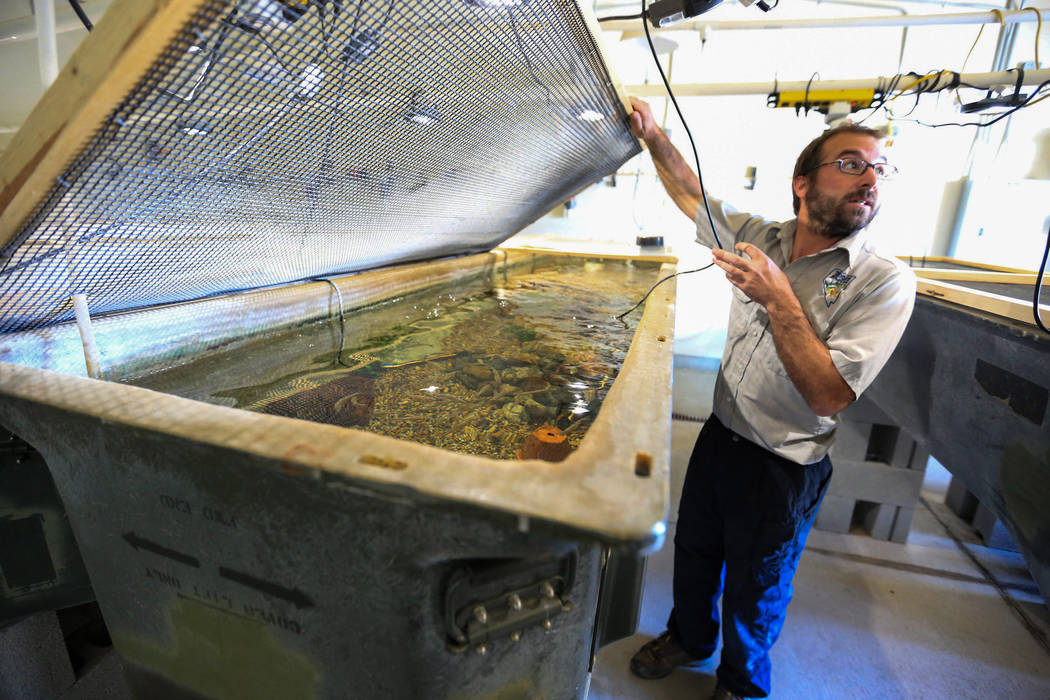Moapa dace population steady in new count of endangered fish

The latest count is in for Clark County’s most endangered fish, and the results are mixed.
While researchers were relieved to see the Moapa dace population holding steady at 1,138 adult fish, they would prefer some real improvement for a species that’s been under federal protection for just over 50 years.
“We’re not in a crisis mode where the species is declining,” said Michael Schwemm, senior fish biologist for the U.S. Fish and Wildlife Service in Southern Nevada. “But we’re not happy with the status quo. We want to see things improve.”
He said researchers plan to step up efforts to restore habitat and eliminate nonnative predators in the warm springs and streams that form the headwaters of the Muddy River, 60 miles northeast of Las Vegas.
To arrive at the most recent population estimate, Schwemm and company put on snorkels and swim masks and crawled through several miles of shallow, warm-water streams, counting the fish one at a time. The survey was conducted over three days in late February by a team from the Fish and Wildlife Service, the Nevada Department of Wildlife and the Southern Nevada Water Authority, which owns most of the fish’s natural habitat in northern Clark County.
This year’s number was close to the February 2017 count of 1,165, but the population remains well below the roughly 1,900 fish spotted during the February surveys in 2015 and 2016.
Even so, the dace is better off now than it was a decade ago, when its numbers suddenly plunged from 1,172 in 2007 to just 459 in 2008.
The sharp decline prompted the protectors of the endangered fish to add a second population survey each August and launch an aggressive campaign to rid the upper Muddy River of tilapia, a predatory, nonnative game fish.
With the tilapia now gone, Schwemm said the recovery team has turned its attention to other, smaller exotics such as mollies and mosquito fish that compete with — and in some cases feed on — Moapa dace.
In light of last month’s count, he said more traps will be deployed to thin the dace’s remaining competition.
The team also will continue working with the Mormon Church to improve fish habitat at a church-owned recreational retreat in the area, Schwemm said.
The finger-length fish with a black spot on its tail was added to the endangered species list in 1967. Its entire habitat is confined to the 116-acre Moapa Valley National Wildlife Refuge; some adjacent private land, including the LDS retreat; and the 1,218-acre tract the water authority bought for $69 million in 2007 and now maintains as the Warm Springs Natural Area.
The Fish and Wildlife Service and the Nevada Department of Wildlife also maintain a back-up population in carefully maintained tanks at the state fish hatchery near Lake Mead.
The current recovery plan for the Moapa dace calls for the species to remain under federal protection until at least 75 percent of its habitat has been secured and its population in the wild reaches 6,000.
Contact Henry Brean at hbrean @reviewjournal.com or 702-383-0350. Follow @RefriedBrean on Twitter.